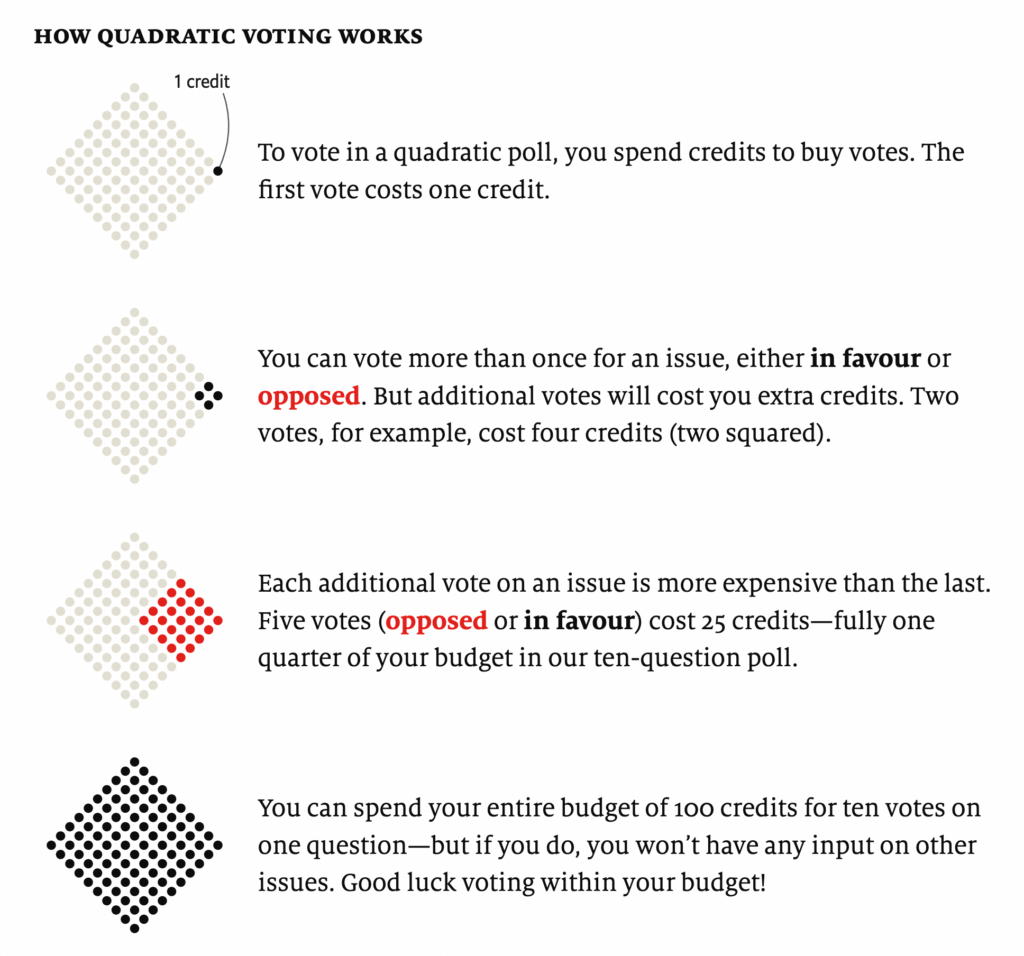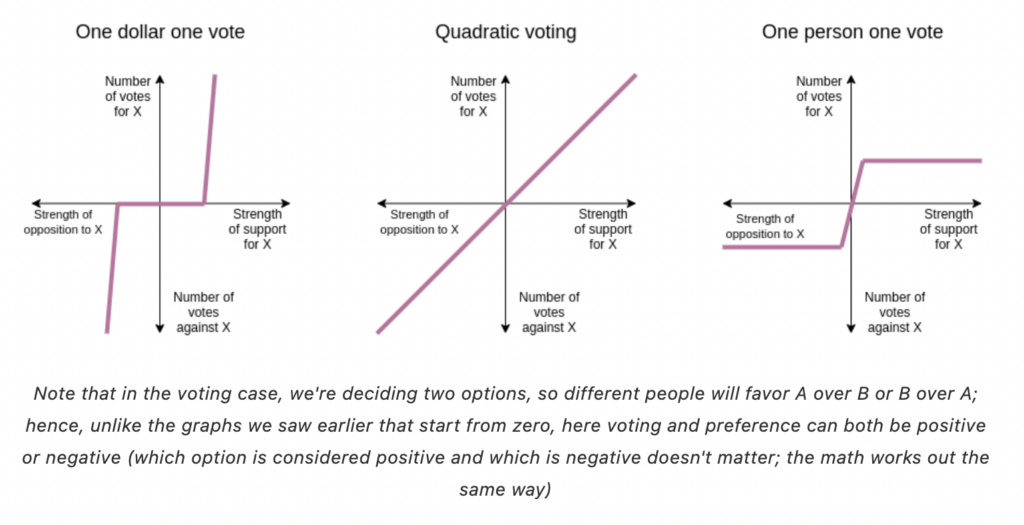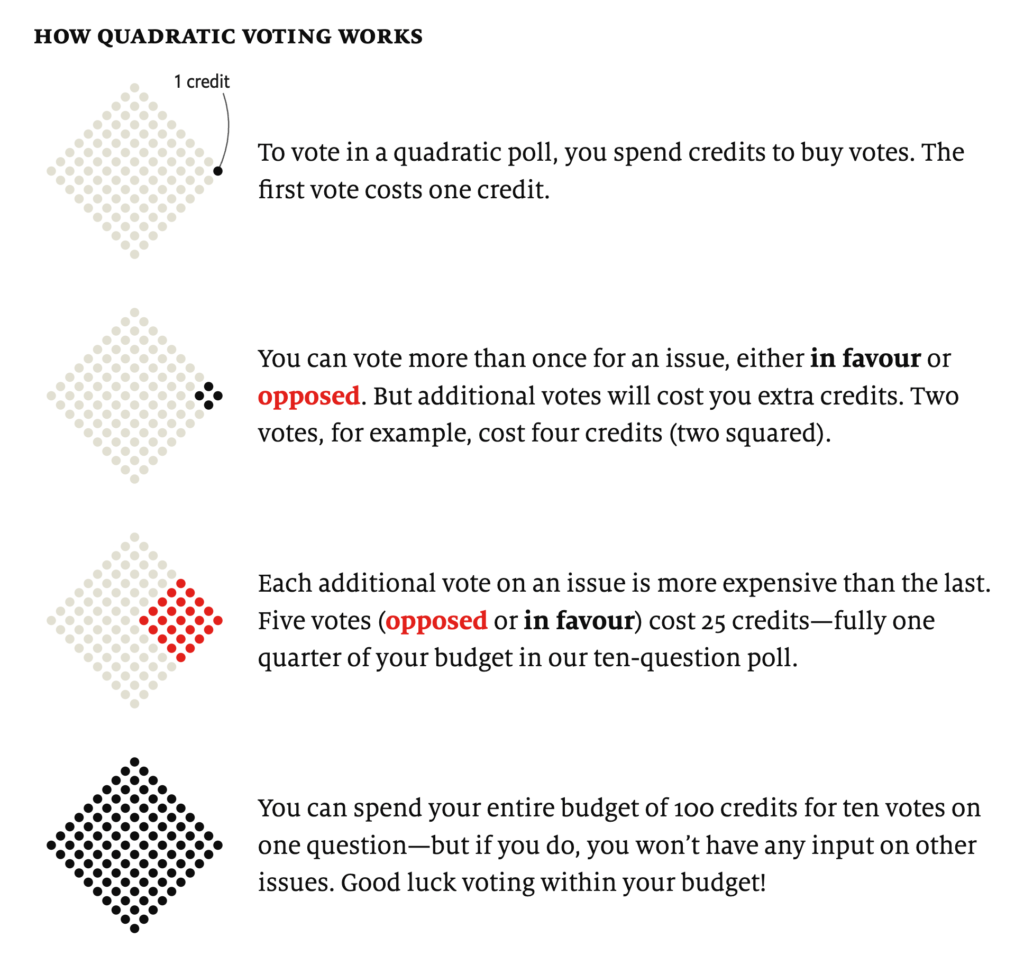One of the great challenges in political philosophy concerns how to distribute decision making among many people. There are different methods for doing so, like democracies of course, but there are also plutocracies, oligarchies, republics, meritocracies, and many more. However, as societies and companies embrace decentralization and autonomy, they’ll need new ways to govern their people.
But how?
The most straightforward way of doing so is to give everyone a vote, called one-person-one-vote, or 1p1v. This is the method adopted by literal democracies. The challenge with this method, however, is two-fold.
First, the person or proposition that receives the most votes wins. That doesn’t sound too bad, until you think about the paradoxes of power disguised by that method. The famed Nobel laureate economist Friedrich Hayek argued in The Road to Serfdom that this brand of governance appeals only to the basest desires of a population, since voters join in with whoever appeals to the lowest common denominator, a person who is likely just the lesser of two evils.
To create checks and balances against those abuses of power dynamics, liberal democracies like the United States have created alternate forms of representation, like through the House of Representatives and the Senate, the electoral college, and constitutional limits. It’s why we’re actually not a literal democracy, but a constitutional republic. Our votes are represented by others, not necessarily by ourselves, which is why we have differences between the popular vote and the de facto winner.
Second, 1p1v allows only for the direction of one’s vote, not its intensity. Suppose you had three propositions to vote for, two of which you felt only meh about, and one you absolutely loved. What if you could save an amount of votes and cast them all toward the last proposition to show the intensity with which you advocate for that position?
This is the promise of what’s known as quadratic voting.

It’s called quadratic voting because each additional vote costs the square of the number of votes you want to cast. In other words, your votes are proportional to how much you care about that issue. Quadratic voting helps limit the disproportional influence tie-breakers and lesser-evils gain over elections.

In a conventional poll, The Economist explains, “people tended to gravitate to one end of the scale or the other. They expressed strong approval or disapproval, just as online reviewers tend to give five stars or none. In both cases, a strong statement costs nothing. In the quadratic poll, people faced a constraint. Expressing vehemence on one issue required them to weaken their stand on another. This constraint forced them to be more discerning about their passions.”
There are many real-world use cases for this method of governance: Colorado legislation, Taiwanese presidential hackathons, Brazilian tax amendments, and so on. Vitalik Buterin, the creator of Ethereum, even proposed quadratic funding as a way to properly incentivize market participants. Further cases like this have been described in detail within a fascinating book called Radical Markets: Uprooting Capitalism and Democracy for a Just Society.
Here’s my modest proposal: Our agency is full of passionate people who care a lot about a lot of things. So, as an experiment, instead of using a 1p1v method via Survey Monkey or spreadsheets, let’s try quadratic voting — using this app — on some issue in the future we think is important. Hell, it doesn’t even have to be an important issue. Let’s just try it and see how we can more fairly represent our views — with passion and intensity.



